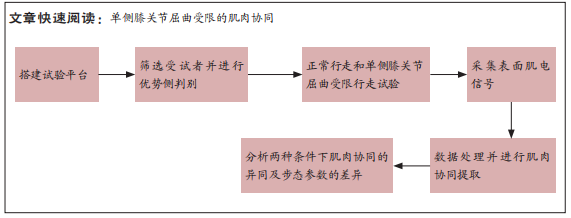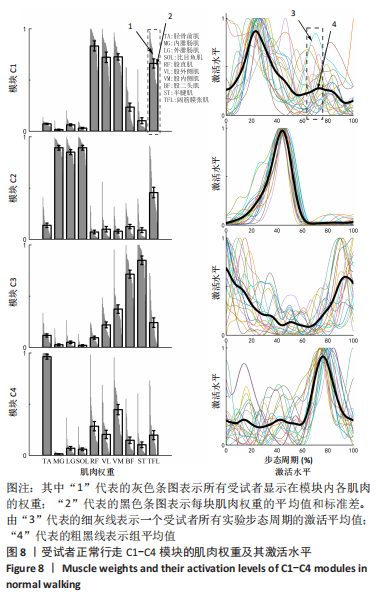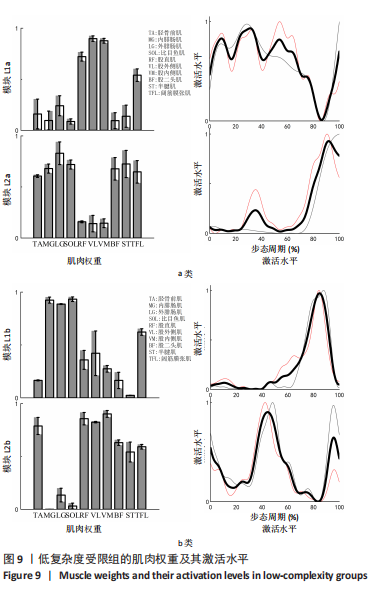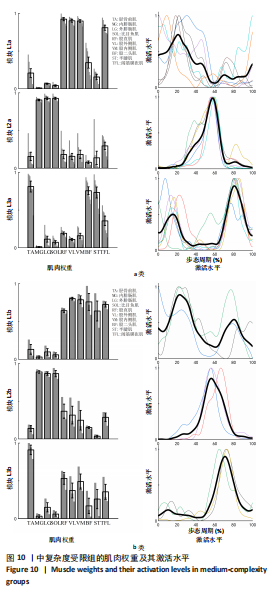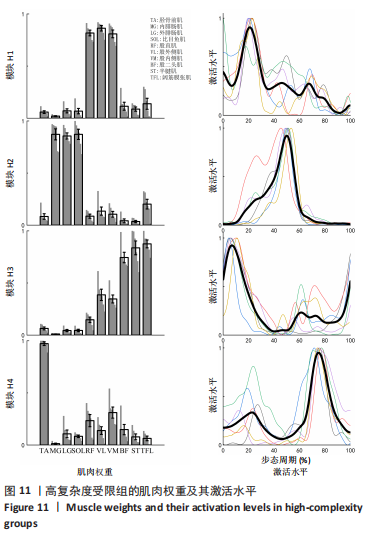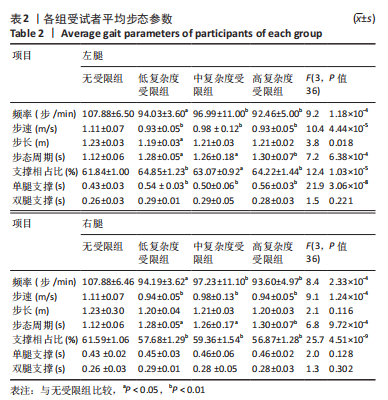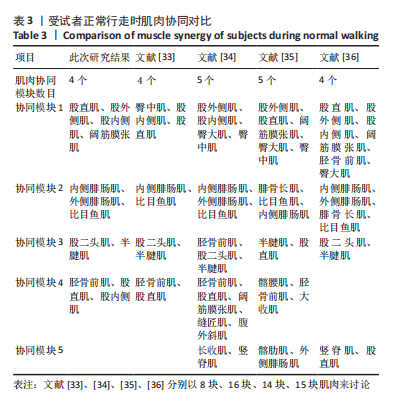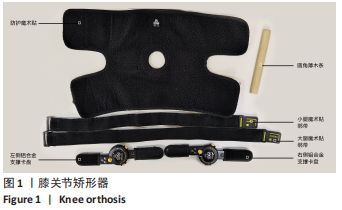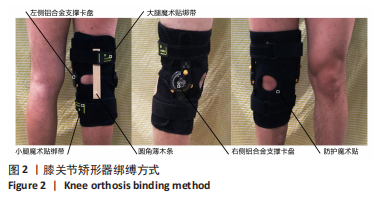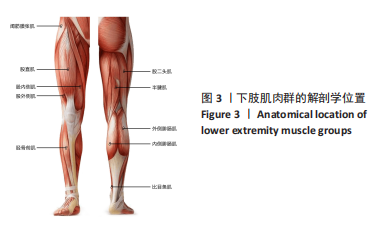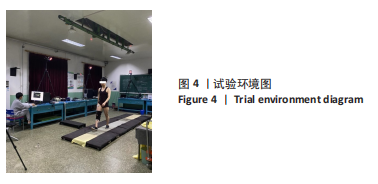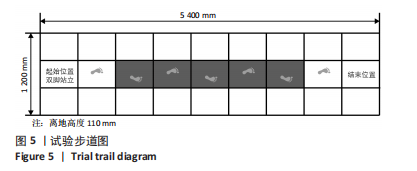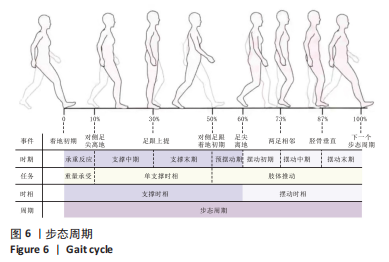[1] AFIAH IN, NAKASHIMA H, LOH PY, et al. An exploratory investigation of changes in gait parameters with age in elderly Japanese women. Springerplus. 2016;5(1):1069.
[2] ZANIN M, OLIVARES F, PULIDO-VALDEOLIVAS I, et al. Gait analysis under the lens of statistical physics. Comput Struct Biotec. 2022;20:3257-3267.
[3] ALLEN JL, KESAR TM, TING LH. Motor module generalization across balance and walking is impaired after stroke. J Neurophysiol. 2019; 122(1):277-289.
[4] MILLER EL, MURRAY L, RICHARDS L, et al. Comprehensive overview of nursing and interdisciplinary rehabilitation care of the stroke patient: A scientific statement from the American Heart Association. Stroke. 2010;41(10):2402-2448.
[5] LEWALLEN LK, SRIVASTAVA S, KAUTZ SA, et al. Assessment of turning performance and muscle coordination in individuals post-stroke. J Biomech. 2021;114:110113.
[6] CAPPELLINI G, IVANENKO YP, POPPELE RE, et al. Motor patterns in human walking and running. J Neurophysiol. 2006;95(6):3426-3437.
[7] TORRES-OVIEDO G, TING H. Muscle synergies characterizing human postural responses. J Neurophysiol. 2007;98(4):2144-2156.
[8] NEPTUNE RR, CLARK DJ, KAUTZ SA. Modular control of human walking: A simulation study. J Biomech. 2009;42(9):1282-1287.
[9] COSTA-GARCIA A, ITKONEN M, YAMASAKI H, et al. A novel approach to the segmentation of sEMG data based on the activation and deactivation of muscle synergies during movement. IEEE Robot Autom Let. 2018;3(3):1972-1977.
[10] 辜禹,陈楠,刘倩,等.肌肉协同理论在小儿脑性瘫痪康复评定中的应用进展[J].中国康复理论与实践,2020,26(6):673-677.
[11] IVANENKO YP, CAPPELLINI G, SOLOPOVA IA, et al. Plasticity and modular control of locomotor patterns in neurological disorders with motor deficits. Front Comput Neurosc. 2013;7(13):123.
[12] SEAMON BA, NEPTUNE RR, KAUTZ SA. Using a module-based analysis framework for investigating muscle coordination during walking in individuals poststroke: A literature review and synthesis. Appl Bionics Biomech. 2018;2018:1-16.
[13] 刘梦君,祁芳,曹倩茹,等.肌肉协同理论在脑性瘫痪儿童运动功能障碍分析中的应用与展望[J].湖南中医药大学学报,2022,42(5): 867-872.
[14] 王洪安,佘青山,马玉良,等.卒中后上肢肌间协同耦合分析研究[J].传感技术学报,2020,33(10):1391-1398.
[15] 李泽兵,楼惠军,孙玉春,等.膝关节僵直原因和治疗[J].上海医科大学学报,2000(3):231-232.
[16] Handzic I, Reed KB. Comparison of the passive dynamics of walking on ground, tied-belt and split-belt treadmills, and via the Gait Enhancing Mobile Shoe (GEMS)[A]. 2013 IEEE 13th International Conference on Rehabilitation Robotics (ICORR). Seattle, WA: IEEE, 2013:1-6.
[17] KERRIGAN DC, ROTH RS, RILEY PO. The modelling of adult spastic paretic stiff-legged gait swing period based on actual kinematic data. Gait Posture. 1998;7(2):117-124.
[18] 江晓峰,胡雪艳.偏瘫步态膝关节角度分析[J].中国康复医学杂志, 2007,22(10):918-920.
[19] 朱斌,梁勋.创伤后膝关节僵直原因分析及综合治疗120例报道[J].中国医药指南,2014,12(13):253-254.
[20] DEN OTTER AR, GEURTS ACH, MULDER TH, et al. Abnormalities in the temporal patterning of lower extremity muscle activity in hemiparetic gait. Gait Posture. 2007;25(3):342-352.
[21] LAMONTAGNE A, RICHARDS CL, MALOUIN F. Coactivation during gait as an adaptive behavior after stroke. J Electromyogr Kines. 2000;10(6): 407-415.
[22] CELESTINO ML, VAN EMMERIK R, BARELA JA, et al. Effects of limited knee flexion movement in intra-limb gait coordination J Biomech. 2021;128:110712.
[23] HUTIN E, PRADON D, BARBIER F, et al. Lower limb coordination patterns in hemiparetic gait: Factors of knee flexion impairment. Clin Biomech. 2011;26(3):304-311.
[24] 张鹏,张峻霞.异构步道中下肢肌群不同时相的表面肌电特性[J].中国组织工程研究,2021,25(36):5814-5820.
[25] MYERS LJ, LOWERY M, O’MALLEY M, et al. Rectification and non-linear pre-processing of EMG signals for cortico-muscular analysis. J Neurosci Meth. 2003;124(2):157-165.
[26] CHEUNG VCK, TUROLLA A, AGOSTINI M, et al. Muscle synergy patterns as physiological markers of motor cortical damage. P Natl Acad Sci USA. 2012;109(36):14652-14656.
[27] KIELIBA P, TROPEA P, PIRONDINI E, et al. How are muscle synergies affected by electromyography pre-processing? IEEE T Neur Sys Reh. 2018;26(4):882-893.
[28] 杨毅,彭玉鑫,郝增明,等.复杂人体运动冗余控制的肌肉协同理论研究进展与展望[J].体育科学,2020,40(12):63-72.
[29] LEE DD, SEUNG HS. Learning the parts of objects by non-negative matrix factorization. Nature. 1999;401(6755):788-791.
[30] TRESCH MC, CHEUNG VCK, D’AVELLA A. Matrix factorization algorithms for the identification of muscle synergies: Evaluation on simulated and experimental data sets. J Neurophysiol. 2006;95(4):2199-2212.
[31] TORRES-OVIEDO G, MACPHERSON JM, TING LH. Muscle synergy organization is robust across a variety of postural perturbations. J Neurophysiol. 2006;96(3):1530-1546.
[32] FRÈRE J, HUG F. Between-subject variability of muscle synergies during a complex motor skill. Front Comput Neurosc. 2012;6:99.
[33] CLARK DJ, TING LH, ZAJAC FE, et al. Merging of healthy motor modules predicts reduced locomotor performance and muscle coordination complexity post-stroke. J Neurophysiol. 2010;103(2):844-857.
[34] KIBUSHI B, MORITANI T, KOUZAKI M. Modular control of muscle coordination patterns during various stride time and stride length combinations. Gait Posture. 2022;94:230-235.
[35] ESMAEILI S, KARAMI H, BANIASAD M, et al. The association between motor modules and movement primitives of gait: A muscle and kinematic synergy study. J Biomech. 2022;134:110997.
[36] CHIA BEJARANO N, PEDROCCHI A, NARDONE A, et al. Tuning of muscle synergies during walking along rectilinear and curvilinear trajectories in humans. Ann Biomed Eng. 2017;45(5):1204-1218.
[37] RANDSBORG PH, TAJET J, NEGÅRD H, et al. Manipulation under anesthesia for stiffness of the knee joint after total knee replacement. Arthroplasty Today. 2020;6(3):470-474.
[38] BENSOUSSAN L, MESURE S, VITON JM, et al. Kinematic and kinetic asymmetries in hemiplegic patients’ gait initiation patterns. J Rehabil Med. 2006;38(5):287-294.
[39] BALASUBRAMANIAN CK, BOWDEN MG, NEPTUNE RR, et al. Relationship between step length asymmetry and walking performance in subjects with chronic hemiparesis. Arch Phys Med Rehab. 2007; 88(1):43-49.
[40] ALLEN JL, KAUTZ SA, NEPTUNE RR. Step length asymmetry is representative of compensatory mechanisms used in post-stroke hemiparetic walking. Gait Posture. 2011;33(4):538-543.
[41] LIU C, FINLEY JM. Asymmetric gait patterns alter the reactive control of intersegmental coordination patterns in the sagittal plane during walking. PLoS One. 2020;15(5):e0224187.
[42] MONACO V, GHIONZOLI A, MICERA S. Age-related modifications of muscle synergies and spinal cord activity during locomotion. J Neurophysiol. 2010;104(4):2092-2102.
|
